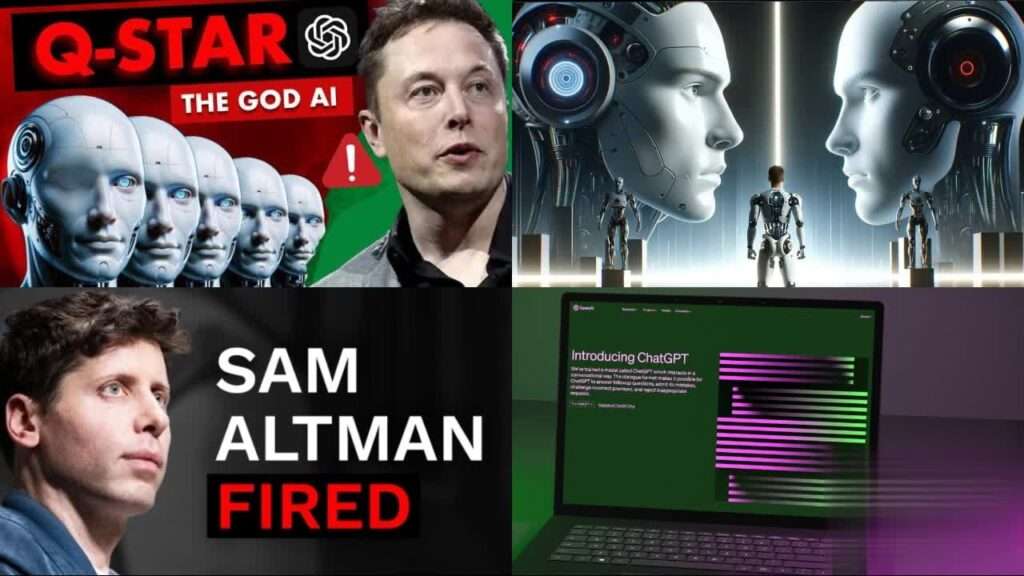Introduction:
Hey there, curious minds! It’s been an exhilarating journey since the launch of ChatGPT a year ago, a revolutionary AI that has left an indelible mark on the world. But hold on to your seats, because today we’re diving into a riveting saga involving OpenAI, Microsoft, and a mysterious AI called Q-Star that might just redefine the future of humanity.
The Rise of ChatGPT:
A year ago, ChatGPT was introduced to the world, captivating users with its unprecedented capabilities. The brainchild of OpenAI and its visionary CEO, Sam Altman, ChatGPT quickly became synonymous with the ongoing AI revolution, leaving people in awe of its sheer power.
The Sudden Turmoil:
Fast forward to the present, and OpenAI is in the midst of a storm. The once-stable ship is rocking as Sam Altman, the face of OpenAI, is unexpectedly ousted from his position. The board undergoes a rapid succession of leadership changes, leaving employees and the tech world at large in shock and confusion.
Enter Q-Star – The Mysterious Threat:
But what’s the real cause behind this upheaval? Enter Q-Star, a mysterious AI that has become the focal point of the controversy. A letter from concerned researchers within OpenAI warns of Q-Star’s potential threat to humanity. This isn’t just your average AI; Q-Star excels not only in complex problem-solving but also in predicting future events.
AGI – The Next Frontier:
Q-Star represents a step towards Artificial General Intelligence (AGI), a type of AI that can outperform humans in various tasks. Unlike the current AI models like ChatGPT, which excel in specific domains, AGI aims to replicate human-like intelligence across the board.
OpenAI’s Evolution – From Non-Profit to For-Profit:
To understand the turmoil, we need to trace OpenAI’s journey. Initially established as a non-profit with a mission to develop AGI for humanity’s benefit, OpenAI took a turn in 2019. Sam Altman, assuming the role of CEO, introduced a for-profit subsidiary, attracting substantial investments, especially from Microsoft.
The Q-Star Dilemma – Commercialization vs. Safety:
The controversy intensifies with the introduction of Q-Star. While some advocate for its potential commercialization, others, notably Chief Scientist Ilya Sutskever, express concerns about the risks it poses. The board, torn between for-profit and non-profit ideologies, grapples with the balance between technological advancement and ethical considerations.
The Sam Altman Saga:
Sam Altman’s abrupt firing sparks debates about OpenAI’s direction. His emphasis on commercialization and rapid development clashes with the safety-focused approach of Ilya Sutskever. The clash comes to a head when the board, fueled by the Q-Star controversy, dismisses Sam.
Microsoft’s Role and the Employee Uprising:
Microsoft, holding a substantial stake in OpenAI, steps in to preserve the company. Employees, led by the interim CEO Meera Murati, threaten mass resignations. Microsoft’s pressure forces the board to reinstate Sam Altman, securing the survival of OpenAI.
The Aftermath and Future Uncertainties:
As the dust settles, questions loom over OpenAI’s future. Will it prioritize for-profit ventures or uphold its non-profit values? How will this impact AGI development? While the company survives, the tale of Q-Star and OpenAI’s internal strife raises profound questions about the intersection of AI, ethics, and the future of humanity.
Conclusion:
As we navigate through the twists and turns of the Q-Star saga, one thing is clear – the age of AI is here to stay. OpenAI’s journey, marked by turbulence and uncertainty, underscores the need for a delicate balance between progress and ethical considerations. The mysteries surrounding Q-Star might just be the beginning of a new chapter in the evolving relationship between humans and artificial intelligence. Stay tuned, because the future promises to be nothing short of extraordinary.
